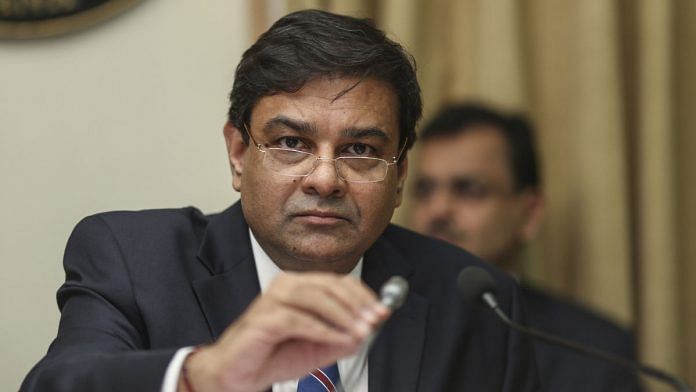Resource-strapped Modi govt wants RBI’s surplus capital. But that can deplete RBI’s net worth & make it ineffective.
An institution with money-printing powers should have no difficulty keeping the lights on. But could it continue to act effectively after depleting its net worth?
Former Bank of England policymaker Willem Buiter posed that question in early 2008, and it’s currently the biggest challenge facing his long-time research collaborator Urjit Patel, the Reserve Bank of India governor.
Under pressure to return surplus capital to a resource-strapped government, Patel should borrow an idea from Buiter’s paper to argue that very little of the central bank’s assets and liabilities are actually visible. For New Delhi to covet what’s in sight of the accountants would be like a ship’s captain deciding to go over a small chunk of ocean ice, ignoring the risk of ramming into a submerged iceberg.
First, consider the counterargument. Chile, Mexico and Israel are examples of central banks that have discharged their mandates successfully despite weak capital positions. Similarly, the market doesn’t approach the bloated finances of the U.S. Federal Reserve, which is leveraged 106 times at present, or the Bank of Japan with anything resembling the trepidation it saves for overextended commercial banks or hedge funds.
The reason for that indifference, however, should form Patel’s first line of defense. The market doesn’t seem to care because of an invisible part of the central bank’s balance sheet. The RBI’s monetary base adds up to $363 billion, including currency in circulation and banks’ current-account deposits with it. This “high-powered money” is duly acknowledged as an RBI liability. However, its ability to borrow at zero interest at will — by printing money — is a source of profits not explicitly accounted for.
Suppose the RBI for some reason (inflation?) couldn’t print money and had to raise the same $363 billion by paying the sovereign’s three-month borrowing cost of 6.9 percent. That’s already a $25 billion hit in one year. Add up the present value of all future profits from not having to pay interest on a $363 billion pile growing in line with the economy, and throw in the $25 billion saved this year. Were it to be accounted for, this profit from seigniorage would easily be the biggest asset on the Indian central bank’s balance sheet. Most of it would over time flow to the government — the bank’s only shareholder — as realized gains on Indian and foreign securities, stuff the RBI buys and sells using its privilege of zero-cost funding.
But there’s a danger, exemplified by Venezuela in the 1980s and 1990s. The central bank, pushed into insolvency by its support of the Latin American government’s industrial policy, leaned too heavily on the power of cheap money-printing to earn profits and repair its balance sheet, and lost control of inflation. Thinning out the Indian central bank’s capital cushion could introduce a similar vulnerability. Patel is already under pressure to use the RBI’s balance sheet to support the private sector by accepting collateral from liquidity-starved shadow banks. His successors won’t want a situation in which printing money would result in untamed inflation, and not doing so would mean the central bank would have no profit to share.
The Indian government may not want to get bogged down by the unseen part of the RBI’s balance sheet. Concentrating solely on the $498 billion of documented assets and liabilities, it might ask why Patel needs $95 billion in revaluation reserves and another $32 billion in contingency funds. That’s way too much capital, it might say, and therefore the RBI should return some. The “surplus capital” figure getting cited in the Indian media is $50 billion.
The trouble is that the central bank can’t reduce one side of the balance sheet without a concomitant decrease in the other. Raiding a little more than half of the $95 billion foreign-currency and gold revaluation account would, from a risk-management view, force the RBI to sell an identical proportion of the related assets, or $190 billion. That would trigger a “cataclysmic deflationary shock” for the economy, as V.K. Sharma, a former central bank executive director, noted in the Business Standard recently. That’s because such a reduction in assets would involve shrinking the liability (the $363 billion monetary base) by $140 billion, net of the $50 billion handed over to the government.
If authorities don’t print new money quickly, the effect would echo India’s other failed monetary experiment: the ban in November 2016 on 86 percent of currency in circulation. That, too, squeezed the monetary base by 34 percent in just one quarter, causing the economy to keel over.
Patel was barely two months into his job when he was pushed to execute the note ban. He couldn’t resist then. But now he should, with all the arguments at his disposal, including those of Buiter. -Bloomberg




Instead of begging money from RBI, Govt should immediately stop raising salaries and DA of its employees, stop salaries/pension/prerequisites of MPs/MLAs and other elected persons, stop wasteful expenditure on building statues of SarvaShri Patel and Shivaji. Govt should show its intentions clearly first.